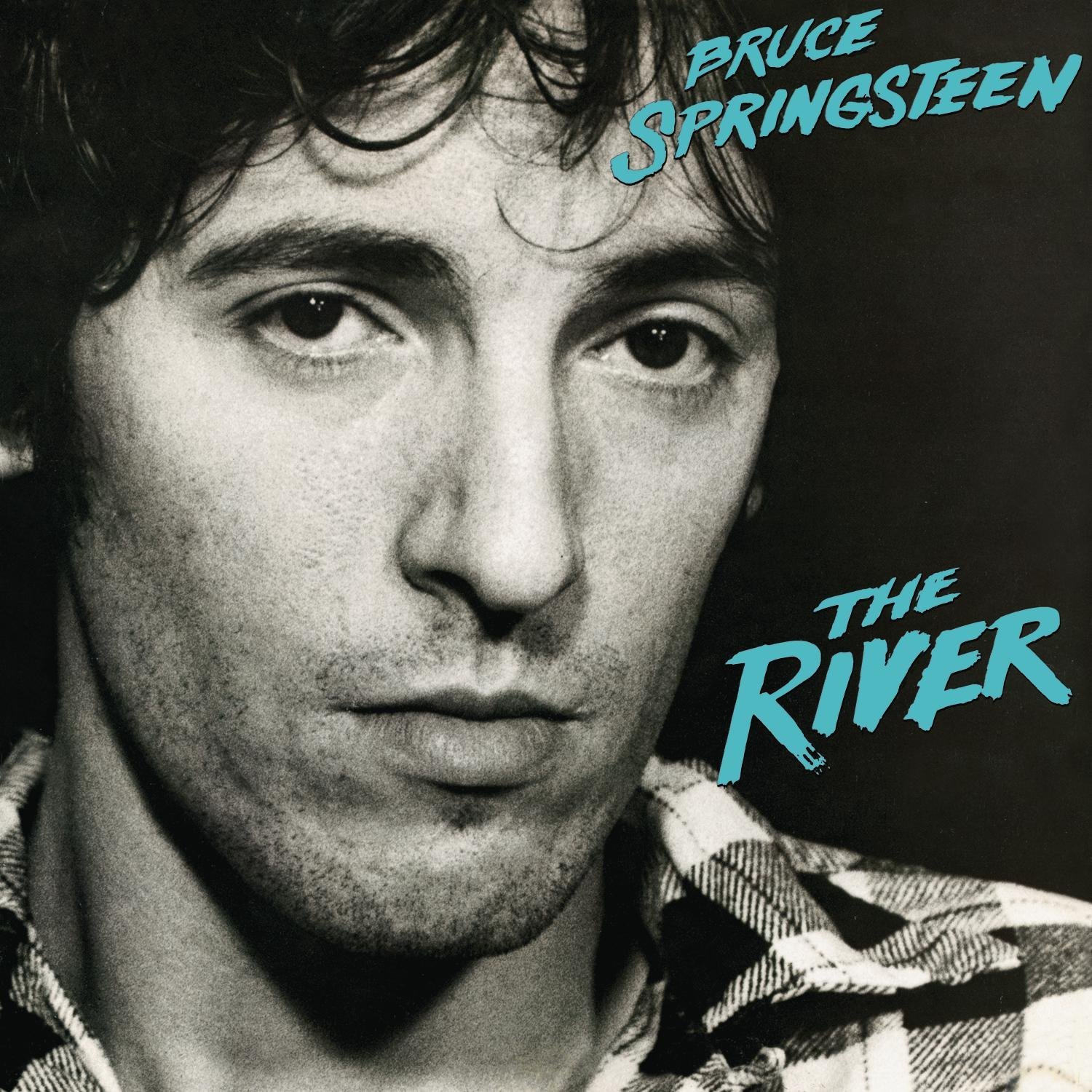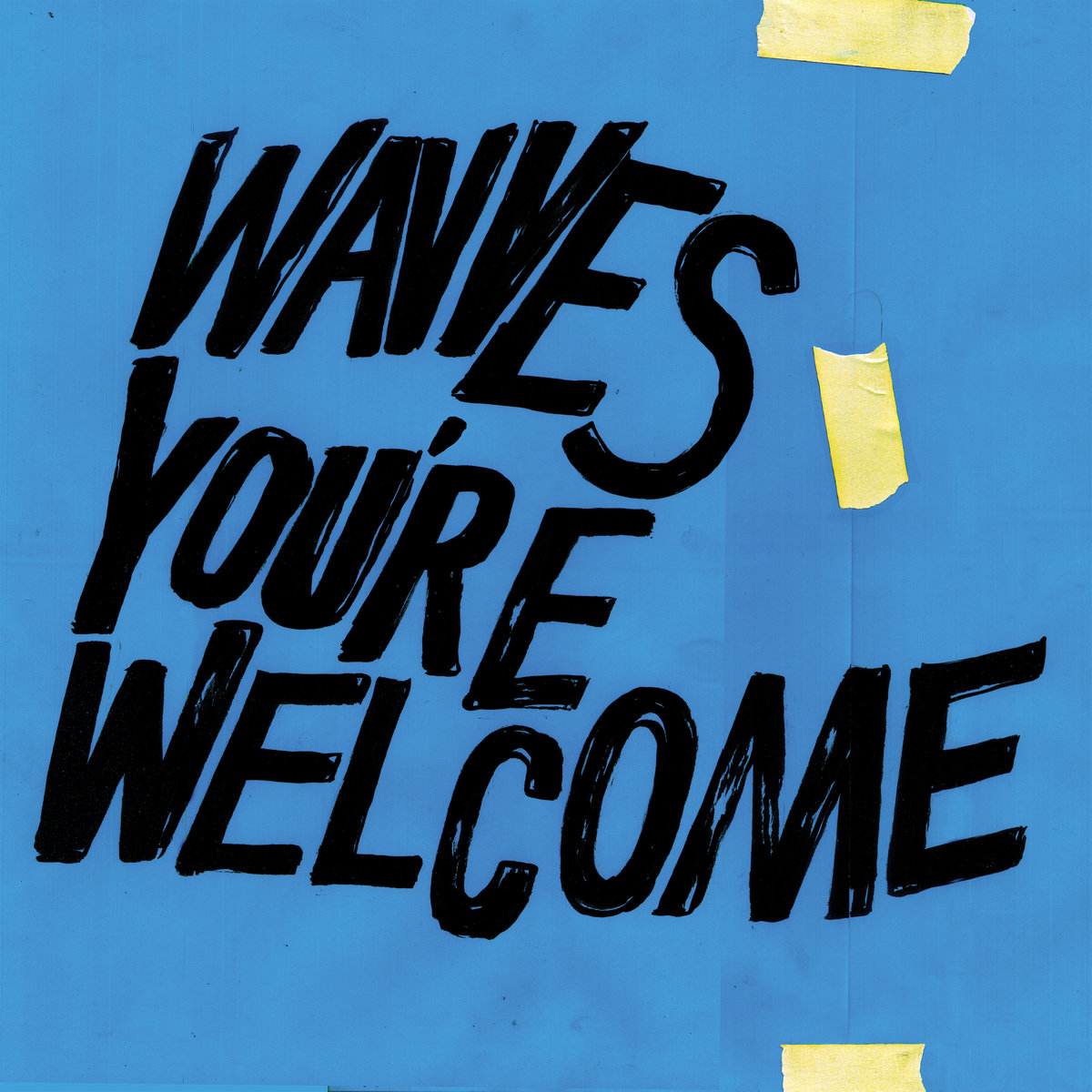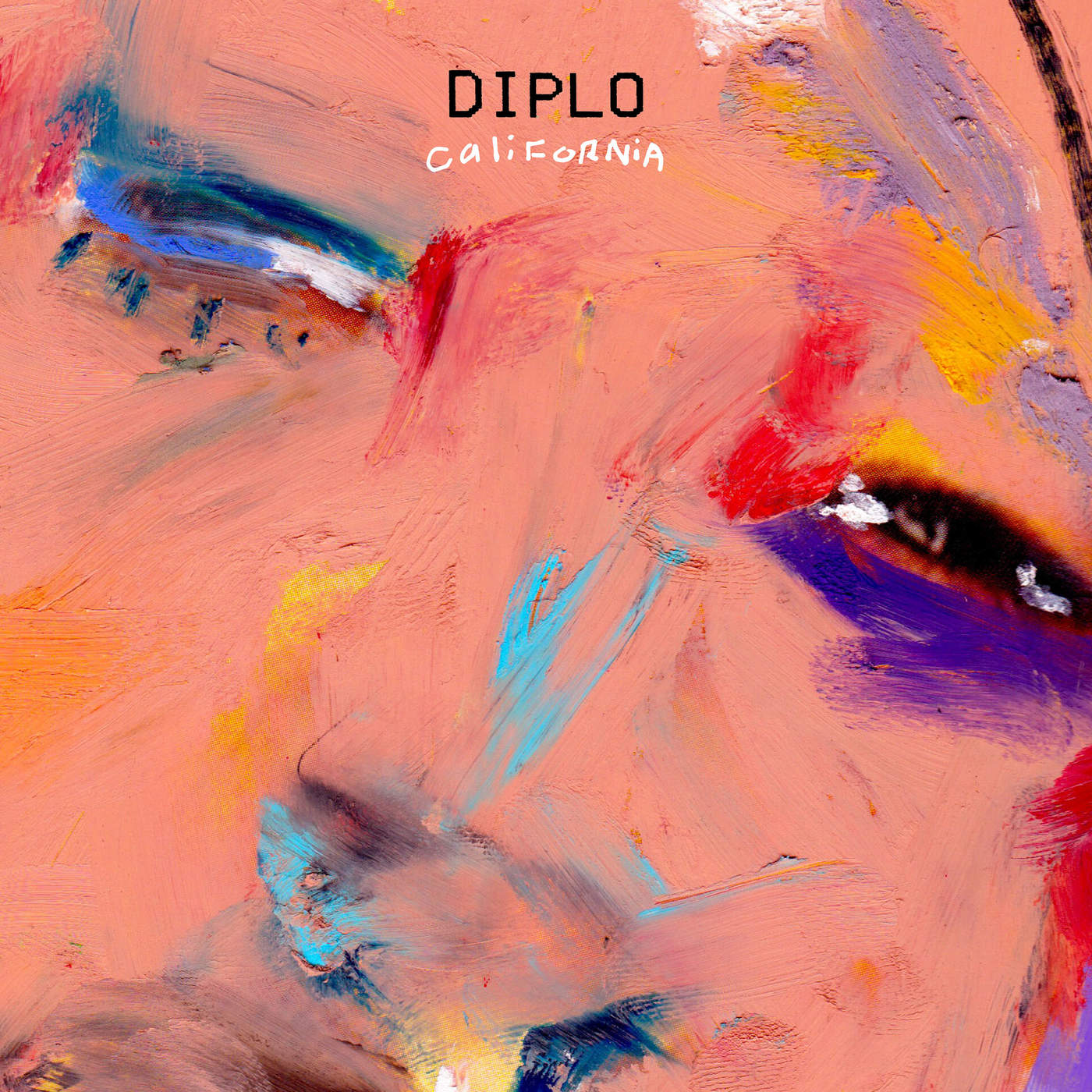
Towards the end of last year, Bruce Springsteen’s 1980 double album The River turned thirty five years old. The album, of course, was released mid-October all those years ago, and December past saw the release of the anniversary celebrating package The Ties That Bind: The River Collection. What’s more this year sees Springsteen pay tribute to that very album with his 2016 ‘The River’ Tour. This epic twenty track album was produced by Jon Landau, Springsteen and bandmate Steven Van Zandt, and was recorded in The Power Station, New York.
The image you’re faced with looking upon this album cover is a stern and serious face, with its shoulders revealing a checked shirt. The typography announcing the artist and album title in block capitals, is just as matter of fact and no more. This font is a shade or two darker than sky blue, and perhaps the colour of an American heartlands river, and as blue collar as the working class Springsteen. Though the album is known arguably for its more serious moments, the lack of facial expression on the cover belies some of the more light hearted moments on the album. I will try to cover, as best I can, both these sides of the album.
The opening track, “The Ties That Bind”, begins with jangly guitars and some nice and busy bass. Springsteen’s impassioned vocals seem to imply that these ties are perhaps that of marriage. The middle section is equally intense with some rapid bursts of drums, and very rock and roll. When that saxophone, from the late, great Clarence Clemons, kicks in it’s a climax of all that emotion that’s been building up. Bruce seems to get to the point when his voice is hoarse, however never shot.
“Sherry Darling” cuts straight in with what is that signature saxophone. The tuneful verse and pre-chorus tell of, basically, putting the proverbial foot up the backside of a troubling woman causing strife in the life of Springsteen. More saxophone then makes way for a Spanish sounding guitar solo. The piano on this track really helps it soar and take flight. This is followed by yet more saxophone, right until the fade out.
Track three, “Jackson Cage”, is a cacophony of endeavour for triumph. His howls of determination turn to impassioned cries of longing, true drama making for the best of music. Harmonica, another Springsteen signature, along with blazing saxophone, makes a cameo appearance and really gives the song character.
Fast forward to “Independence Day” and things get a bit more subdued. That almost whistling melody at the start like the heroism of going out to sea, and perhaps never coming back. The track title isn’t so much American pride, but seeming despair at the cost of historical acquired lands and freedoms. The tinkling piano conveys real pain and sadness, but also the beauty in that sadness.
“Hungry Heart” is the layman’s passage to this album. It’s a curious one in that it seems a tad mournful, but the overall message is a positive one. That driving, almost swinging, piano really stamps its identity upon the track. The melody it plays as the song begins to fade is almost beautiful in its simplicity.
Next track “Out In The Street” really gets going with an intense pre-chorus that builds to the “whoa oh oh oh oh”, almost punky vocals, is very satisfying. Again, there’s top saxophone playing in this one. The piano playing, that main melody, really hooks you in, giving you the emotional base for the entire track itself.
The title track, “The River”, begins mournfully with the harmonica. The guitars and vocals of Springsteen come in a few bars later, where he details the strife of the American working class. Like being trapped in a situation of which there’s no way out of. A harmonica solo is wistful and longing, like when white country music meets the black blues. It’s a snapshot of America life at the time, poor economy and a shrinking jobs market.
The protagonist in the track, of course, goes through all these dramas. That drama is what makes a Springsteen track a Springsteen track. Apparently, this title track, and perhaps the overall theme for the album, concerned Springsteen’s sister and his brother-in-law. His brother-in-law was in the construction industry, lost his job and struggled hard in the late Seventies.
We go from closing the first disc, to the opener on the second. “Point Blank” starts with desperate, tragic piano. Springsteen’s vocals are just as grave, “point blank, shot between the eyes”. A Hammond organ takes centre stage, and traipses the line between working and not working for the spirit of the song. The song on the whole is not a particularly fast one, but still builds in intensity and drama without the need for drastic tempo changes.
Skip a few tracks and you find “Drive All Night”. It’s an epic, almost clocking eight and a half minutes. It begins with a rimshot beat, nice and simple, punctuated by piano and muted bass. The melody is melancholy. Despite being a slow one, Bruce’s vocals soar with real power with no need for rock and roll histrionics to accentuate it. Seeming background organ gives it a gospel and soul feel, searching and longing for happiness.
Indeed, drive all night, to find that happiness; the endeavour of it all. The signature Springsteen wail of impassioned pain follows “oh girl, you’ve got my love”. Then, “I swear I’ll drive all night; through the wind, through the rain, through the snow” closes, leaving the listener in little doubt as to the meaning of the song overall.
Closer “Wreck On The Highway” is far shorter than the previous, but arguably as intricate. Starting with “riding through the drizzling rain”, it appears to continue the theme of the aforementioned. It’s just as mournful, but takes a different tack in conveying those same emotions.
The worrying aspect of assuming this narrative carries on from the track before, of course, is that perhaps the protagonist’s car, and himself, are indeed wrecked in pursuit of the very happiness he was seeking. The section that fades out the track is almost unexpected, as the track comes to a complete halt and momentary pause before it reveals itself. Although it accentuates a previous guitar melody, it deservedly gets put to the fore because it’s definitely almost a progressive element, adding to the song overall.
This album definitely covers a range of emotions. The mourning of the likes of “Independence Day” followed straight after in the track listing by happy go lucky “Hungry Heart”, being a prime example. Fortunately, the mood doesn’t swing so wildly elsewhere, like when the tragic “Point Blank” follows the hopelessness of “The River”. This, combined with the fact that the first three songs are generally happy, and the last two songs generally sad, which in turn also carry on themes of driving, makes for a balanced album with a well placed track listing.
As with many double albums, I daresay this could’ve been a single disc issue. On the first disc, “Two Hearts” is arguably a throwaway, and “Crush On You”, “You Can Look (But You Better Not Touch)” and “I Wanna Marry You” aren’t much better.
Onto the second, and “Cadillac Ranch”, “Stolen Car” and “Ramrod” are good, but not good enough for a one disc piece. “The Price You Pay” sounds too much like like “The Promised Land” from his previous effort, Darkness On The Edge Of Town. However, “I’m A Rocker” and “Fade Away” are near misses for my appointed single disc edition.
Judging by the highlights conveyed in this review alone, there’s no wonder why Springsteen has used this flagship album, celebrating its thirty five years in the world of music, to support his touring this year. The River was first released on October 17, 1980, purchase it on iTunes here.
Words by Andrew Watson





